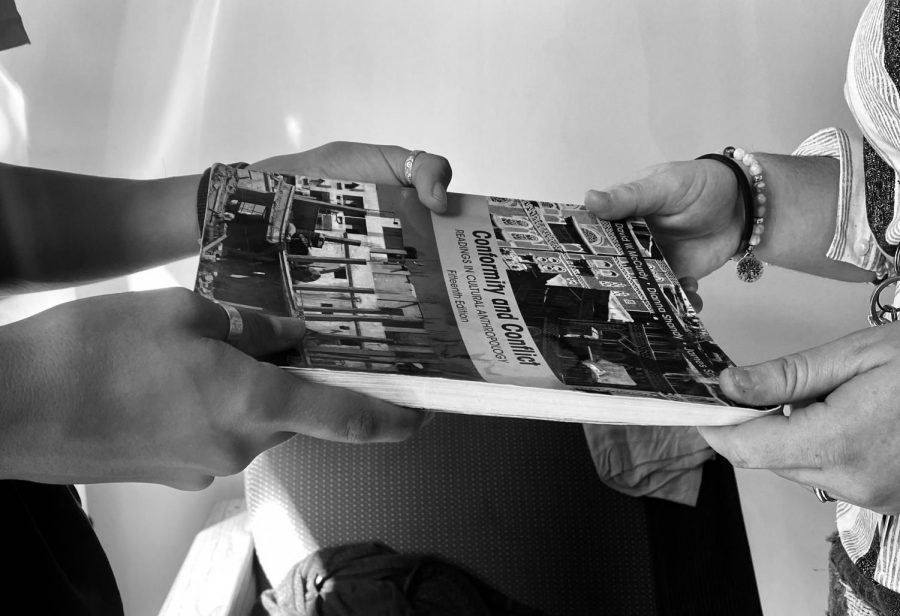Buy and sell page encourages campus trading
Students meet to exchange a textbook after connecting on the Linfield Buy and Sell Facebook page.
August 31, 2021
Buying, selling, and donating used items just got a lot easier at Linfield University.
Junior roommate duo, Kathryn Canfield and Emma Inge, launched Linfield Buy and Sell after they saw a lack of convenient options for students to find new homes for used items. As the girls moved out of their sophomore dorms and into their new fully-furnished apartment, they realized that they no longer had a need for classic dorm essentials, such as a twin-sized mattress topper or a mini-fridge.
Canfield called Inge to ask if she wanted any of the items, but Inge was in a similar situation. She already had all that she needed.
“It seemed like such a waste to get rid of it, those things are so expensive,” Inge said.
They saw other students experiencing the same issue. Some would post to their personal social media pages in an attempt to sell various clothes, furniture, and goods. It’s also not uncommon to see students simply leave entire mini-fridges and carpets near the dumpster.
Canfield spoke to her mother about the issue they were facing, and her mother said people were asking about the lack of a buy and sell option for students on a Linfield parent-only Facebook page. Then, she spoke to her sister, who told her they had a Facebook group for that exact purpose at her university in California.
“I feel like our community is small enough that it would work,” Canfield said. “It’s going to ease a lot of anxiety when it comes to getting that stuff off your hands.”
They worked together to create a Facebook page and invited students to become members.
Over 200 people joined the page in the first few weeks and have already sold tables, textbooks, whiteboards, televisions, shoes and more to their peers. Inge and Canfield hope to continue to grow the page to involve all campus community members.
To join the page, individuals will have to answer three questions to confirm that they are Linfield students. These measures help prevent spam and ensure relevancy of all posts.
Secondhand purchases have become increasingly more popular in the last few years, due to recent sustainability efforts and awareness surrounding the climate impact of the retail industry.
According to online consignment store thredUP, purchasing a used clothing item, as opposed to a new one, displaces 17.4 pounds of carbon dioxide emissions. It also saves water, energy, and avoids landfill waste.
Buying secondhand is a popular trend among teens and young adults, or Generation Z. The age group, which includes people born between 1997 and 2012, accounts for 40% of secondhand fashion’s global consumers.
Inge says that she often makes an effort to buy clothing and furniture secondhand.
“I’m trying to be more conscious about my shopping habits,” Inge said. “In the end, it’s better to see [items] repurposed and given a new home, rather than just being thrown away knowing it had more life in it.”
The duo hopes that more students will use to page to reduce waste as they transition into their new dwellings at the beginning of the school and as styles change throughout the year.
“It’s not going to be far away, you’re not going to have to drive,” Canfield said. “If you’re trying to sell something, this is the best way you can get it sold.”

